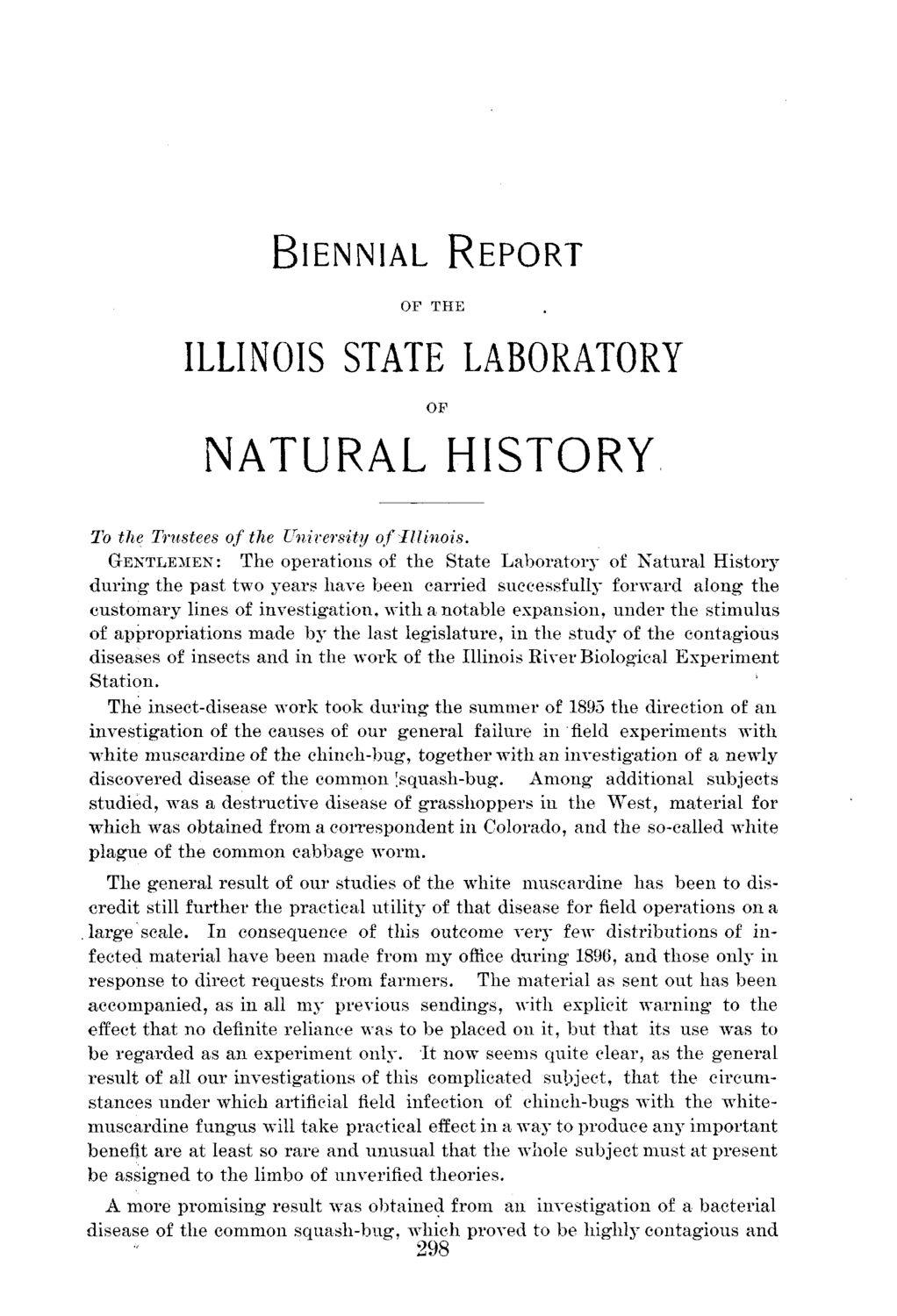| |
| |
Caption: Board of Trustees Minutes - 1896
This is a reduced-resolution page image for fast online browsing.

EXTRACTED TEXT FROM PAGE:
BIENNIAL REPORT OF THE ILLINOIS STATE LABORATORY OF NATURAL HISTORY To the Trustees of the University of Illinois. GENTLEMEN: The operations of the State Laboratory of Natural History during" the past two years have been carried successfully forward along the customary lines of investigation, with a notable expansion, under the stimulus of appropriations made by the last legislature, in the study of the contagious diseases of insects and in the work of the Illinois River Biological Experiment Station. The insect-disease work took during the summer of 1895 the direction of an investigation of the causes of our general failure in field experiments with white muscardine of the chinch-bug, together with an investigation of a newly discovered disease of the common [squash-bug. Among additional subjects studied, was a destructive disease of grasshoppers in the West, material for which was obtained from a correspondent in Colorado, and the so-called white plague of the common cabbage worm. The general result of our studies of the white muscardine has been to discredit still further the practical utility of that disease for field operations on a .large scale. In consequence of this outcome very few distributions of infected material have been made from my office during 1896, and those only in response to direct requests from farmers. The material as sent out has been accompanied, as in all my previous sendings, with explicit warning to the effect that no definite reliance was to be placed on it, but that its use was to be regarded as an experiment only. It now seems quite clear, as the general result of all our investigations of this complicated subject, that the circumstances under which artificial field infection of chinch-bugs with the whitemuscardine fungus will take practical effect in a way to produce any important benefit are at least so rare and unusual that the whole subject must at present be assigned to the limbo of unverified theories. A more promising result was obtained from an investigation of a bacterial disease of the common squash-bug, which proved to be highly contagious and 298
| |